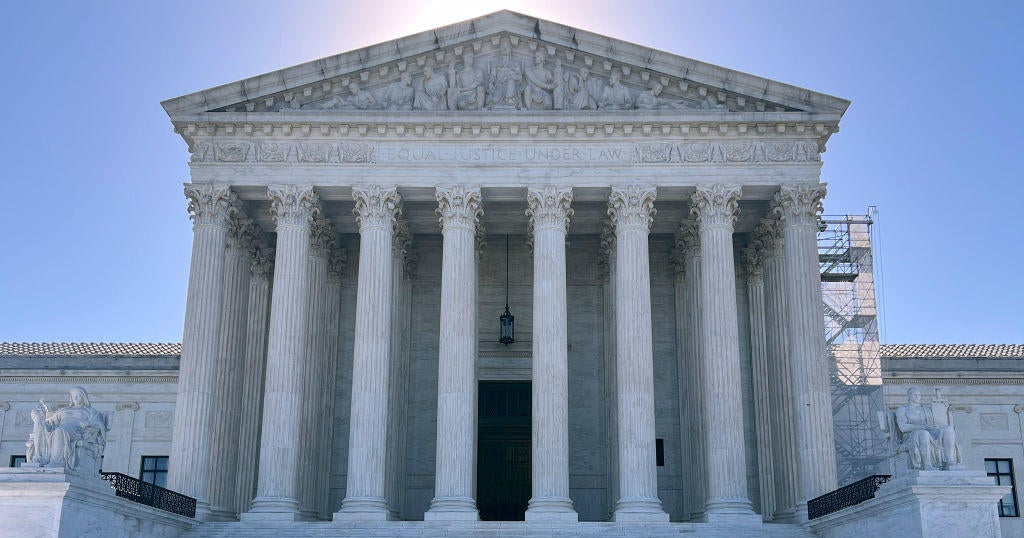/ CBS News
CBS News Live
Washington — The Supreme Court on Friday overturned a landmark 40-year-old decision that gave federal agencies broad regulatory power, upending their authority to issue regulations unless Congress has spoken clearly.
The court split along ideological lines in the dispute, with Chief Justice John Roberts writing for the conservative majority. Justices Elena Kagan, Sonia Sotomayor and Ketanji Brown Jackson were in dissent. Kagan read portions of her dissent from the bench.
The court's ruling in a pair of related cases is a significant victory for the conservative legal movement, which has long aimed to unwind or weaken the 1984 decision in Chevron v. National Resources Defense Council. Critics of that landmark ruling, which involved a challenge to a regulation enacted by the Environmental Protection Agency under the Clean Air Act, have said the so-called Chevron doctrine gives unelected federal bureaucrats too much power in crafting regulations that touch on major areas of American life, such as the workplace, the environment and health care.
"Chevron is overruled. Courts must exercise their independent judgment in deciding whether an agency has acted within its statutory authority, as the [Administrative Procedure Act] requires," Roberts wrote for the court. The chief justice called the earlier decision a "judicial invention that required judges to disregard their statutory duties."
The framework required courts to defer to an agency's interpretation of laws passed by Congress if it is reasonable. Calls for it to be overturned came from not only conservative legal scholars, but some of the justices themselves who have said courts are abdicating their responsibility to interpret the law.
The Supreme Court's reversal of the Chevron decision also further demonstrates the willingness of its six-justice conservative majority to jettison decades of past rulings. In June 2022, the court overturned Roe v. Wade, dismantling the constitutional right to abortion, and in June 2023, it ended affirmative action in higher education.
The challenge to Chevron deference
The dispute that led to the court's reevaluation of the Chevron doctrine stemmed from a 2020 federal regulation that required owners of vessels in the Atlantic herring fishery to pay for monitors while they're at sea.
These at-sea monitors, who collect data and oversee fishing operations, can cost more than $700 per day, according to court filings.
The National Marine Fisheries Service implemented the rule under a 1976 law, arguing that the measure allows it to require fishing vessels to cover the cost of the monitors. But companies that operate boats in New Jersey and Rhode Island challenged the regulation in two different federal courts, claiming the fisheries service lacked the authority to mandate industry-funded monitoring.
The federal government prevailed in both challenges, and the fishing companies asked the Supreme Court to step in and overrule Chevron.
The industry-monitored fishing program was suspended in April 2023 because of a lack of federal funding, and the fishermen were reimbursed for associated costs. Justice Ketanji Brown Jackson recused herself from one of the two Chevron cases before the court.
Concerns about a ruling
While the conservative legal movement decried the growth of the so-called administrative state, the Supreme Court's decision to reconsider the Chevron ruling sparked concerns that unwinding or even limiting the framework would threaten the ability of federal agencies to craft regulations on issues like the environment, nuclear energy or health care.
Proponents of the doctrine have argued that agencies have the expertise and experience to address gaps in the laws enacted by Congress, especially when it comes to administering programs that serve broad swaths of the population. Overturning Chevron would make it more difficult for the federal government to implement the laws passed by Congress, its backers warned.
The Biden administration urged the Supreme Court to leave Chevron deference intact, calling it a "bedrock principle of administrative law." Justice Department lawyers argued that the framework allows experts at federal agencies to interpret statutes, and have said they, not judges, are better suited to respond to ambiguities in a law.
Chevron doctrine has been applied by lower courts in thousands of cases. The Supreme Court itself has invoked the framework to uphold agencies' interpretations of statutes at least 70 times, but not since 2016.
The pair of disputes were among several others that the justices are deciding this term that involve the power of federal agencies. They also weighed the constitutionality of internal legal proceedings at the Securities and Exchange Commission, which threatened to upend the work of administrative law judges in various federal agencies, as well as whether the Bureau of Alcohol, Tobacco, Firearms and Explosives lacked the authority to outlaw bump stocks under a 1934 law that regulated machine guns.
The court ruled in a divided 6-3 decision that the ATF did go too far when it banned bump stocks, invalidating the rule put in place during the Trump administration.
Melissa Quinn is a politics reporter for CBSNews.com. She has written for outlets including the Washington Examiner, Daily Signal and Alexandria Times. Melissa covers U.S. politics, with a focus on the Supreme Court and federal courts.
